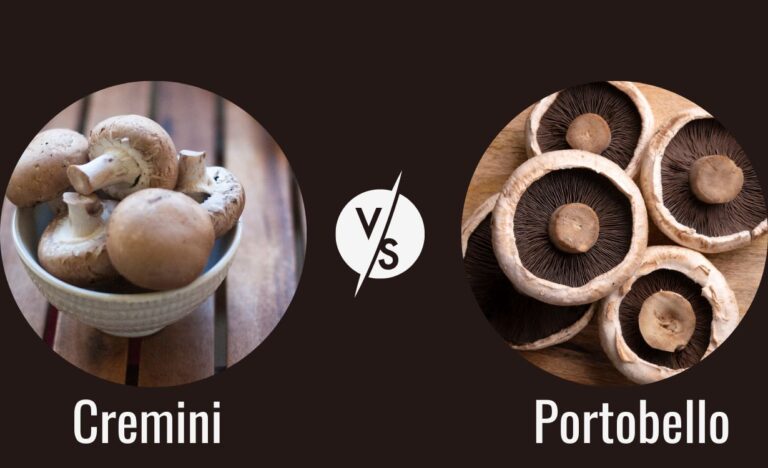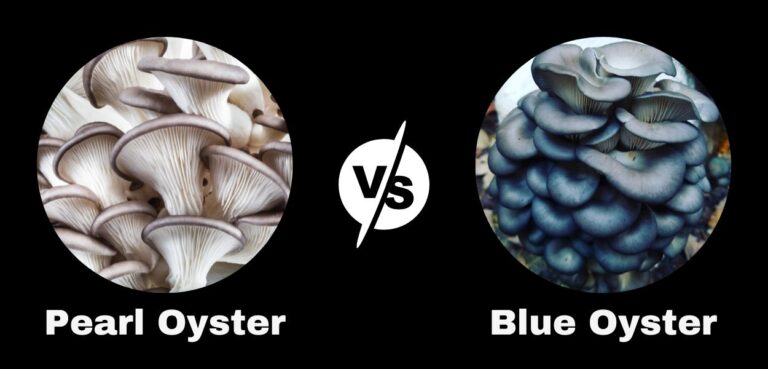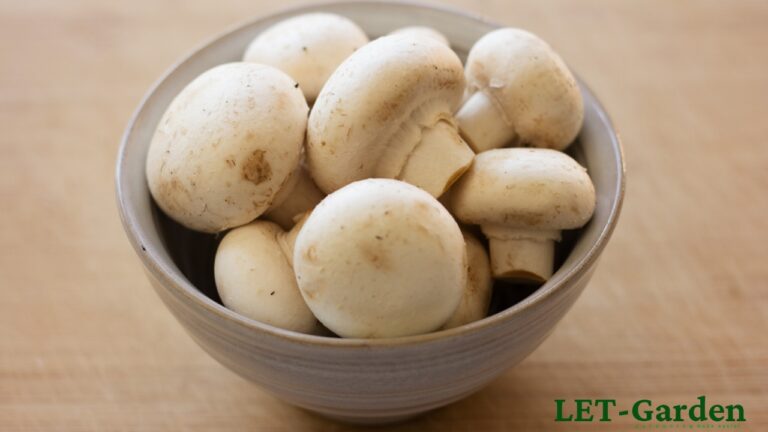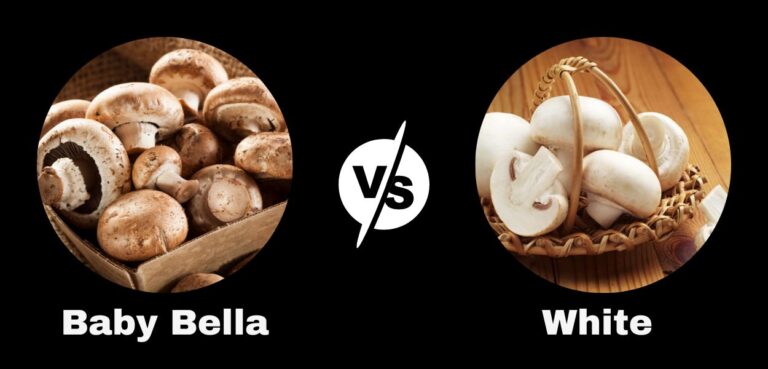
Mushrooms are fascinating organisms that can be found all over the world. They come in various shapes, sizes, and colors, and while some are edible and even prized in the culinary world, others can be highly toxic and deadly. This is why it’s crucial to be able to identify the different types of mushrooms. In this blog post, we’ll be comparing two types of mushrooms: the shaggy parasol vs vomiting mushroom. We’ll look at their physical characteristics, habitats, and potential toxicity, and discuss why it’s essential to know how to distinguish between them. By the end of this post, you’ll have a better understanding of these two types of mushrooms and the importance of proper mushroom identification.
Shaggy Parasol: A Guide to Identification

The shaggy parasol mushroom, also known as Chlorophyllum rhacodes, is a large, edible mushroom found in many parts of the world. It is a popular culinary ingredient due to its meaty texture and mild flavor. In this section, we’ll take a closer look at the physical characteristics, habitat, and potential confusion with other mushrooms to help you identify the shaggy parasol with ease.
Physical Characteristics
The shaggy parasol mushroom has a large, bell-shaped cap that can grow up to 10 inches in diameter. The cap is initially spherical, but it flattens out as it matures. It is covered in shaggy scales, which give it a unique appearance. The color of the cap can vary from brownish-gray to tan, and it may have a slightly darker center.
The stem of the shaggy parasol mushroom is thick and sturdy, and it can grow up to 10 inches in height. It is typically white, with a scaly texture that matches the cap. The stem is also hollow, making it easy to distinguish from other mushrooms.
The gills of the shaggy parasol mushroom are white when young but turn pink and eventually brown as they mature. They are free from the stem and are not attached to it.
Habitat
The shaggy parasol mushroom is a saprotrophic fungus, which means that it grows on decaying organic matter such as compost or grass clippings. It is often found in lawns, gardens, and other grassy areas. It typically grows in late summer and early fall, but it can be found throughout the year in some regions.
Edibility and Culinary Uses
The shaggy parasol mushroom is an edible species and is prized for its meaty texture and mild flavor. It can be used in a variety of dishes, such as stews, soups, and sautés. However, it is important to note that some people may experience mild gastrointestinal distress after consuming the mushroom. As with any wild mushroom, it is important to cook it thoroughly before consuming it.
Potential Confusion with Other Mushrooms
The shaggy parasol mushroom is often confused with other similar-looking mushrooms, such as the poisonous green-spored parasol mushroom (Chlorophyllum molybdites). To avoid confusion, it’s important to pay attention to the physical characteristics of the mushroom, such as the scales on the cap and stem, the free gills, and the hollow stem.
Overall, the shaggy parasol mushroom is a unique and delicious edible species that can be found in many parts of the world. With its distinctive appearance and meaty texture, it is a popular ingredient in many culinary dishes. By understanding its physical characteristics, habitat, and potential confusion with other mushrooms, you’ll be able to confidently identify and enjoy this delectable mushroom.
Vomiting Mushroom: Characteristics, Habitat, and Health Risks

The Vomiting Mushroom, scientific name Chlorophyllum molybdites, is a type of mushroom that is commonly found in North America, Europe, and Asia. Although it may resemble some edible varieties, this mushroom is highly toxic and can cause severe gastrointestinal distress if ingested.
Physical Characteristics
The Vomiting Mushroom has a cap that can grow up to 20 cm in diameter and can vary in color from light to dark green. The cap’s surface is smooth, and the margin of the cap often has a wavy or scalloped appearance. The stem is also green and can grow up to 30 cm in height, with a diameter of up to 3 cm. The gills are white and free from the stem, turning pink as the mushroom matures.
Habitat
Vomiting Mushrooms are commonly found in grassy areas, such as lawns and meadows, as well as in forests. They grow in clusters and can appear in large numbers, especially after periods of rain. These mushrooms prefer warm and humid environments, making them more common in the summer and fall.
Toxicity and Health Risks
The Vomiting Mushroom contains a toxin known as molybdites, which can cause severe gastrointestinal distress. Symptoms can include vomiting, diarrhea, abdominal pain, and dehydration, and can appear anywhere from 30 minutes to several hours after ingestion. While the effects are rarely fatal, they can be debilitating and can require medical attention. In some cases, people may mistake the Vomiting Mushroom for an edible variety, leading to accidental ingestion and poisoning.
Potential Confusion with Other Mushrooms
The Vomiting Mushroom can be mistaken for other edible varieties, such as the Parasol Mushroom or the Green-Spored Lepiota, which can lead to accidental ingestion. It’s important to note that the Vomiting Mushroom has green spores, which can help differentiate it from other varieties. It’s also important to note that the Vomiting Mushroom should not be confused with the closely related and edible Shaggy Parasol Mushroom, which has a similar appearance but is safe for consumption.
However, the Vomiting Mushroom is a highly toxic mushroom that can cause severe gastrointestinal distress if ingested. Its physical characteristics and habitat make it easy to confuse with other mushrooms, highlighting the importance of proper identification before consumption. Remember, when it comes to mushrooms, it’s always better to err on the side of caution and avoid eating anything that you’re not 100% sure is safe to consume.
Differences Between Shaggy Parasol and Vomiting Mushroom
While both the shaggy parasol and vomiting mushroom have some physical similarities, there are also significant differences that can help distinguish one from the other. Here are some key differences to look out for:
Physical Differences:
- Cap: The shaggy parasol has a large, umbrella-shaped cap that can grow up to 30cm in diameter, while the vomiting mushroom has a smaller, bell-shaped cap that is typically less than 10cm in diameter.
- Stem: The stem of the shaggy parasol is thick and sturdy, with a distinctive shaggy texture, while the stem of the vomiting mushroom is thin and fragile.
- Gills: The gills on the underside of the shaggy parasol’s cap are white, while the gills of the vomiting mushroom are yellow.
Habitat Differences:
- Shaggy parasols tend to grow in grassy fields or wooded areas, while vomiting mushrooms prefer to grow in dense, damp forests.
- Shaggy parasols tend to grow in groups or clusters, while vomiting mushrooms are often found growing alone.
Edibility/Toxicity Differences:
- Shaggy parasols are considered a choice edible mushroom, prized for their mild, nutty flavor and meaty texture. In contrast, the vomiting mushroom is highly toxic and can cause severe gastrointestinal symptoms such as vomiting, diarrhea, and stomach cramps.
- It’s worth noting that while the shaggy parasol is generally considered safe to eat, there is a risk of confusion with other poisonous mushrooms, such as the poisonous lookalike, the green-spored parasol.
Overall, while both the shaggy parasol and vomiting mushroom share some physical similarities, there are also significant differences that can help distinguish one from the other. By understanding these differences, you can reduce your risk of consuming a toxic mushroom and enjoy the many benefits that edible mushrooms have to offer.
FAQs on Shaggy Parasol vs Vomiting Mushroom
What mushrooms are similar to shaggy parasol?
There are a few mushrooms that can be mistaken for shaggy parasols. The parasol mushroom (Macrolepiota procera) looks similar to shaggy parasols, but has some key differences in its physical characteristics. The false parasol/vomiter (Chlorophyllum molybdites) is another lookalike that can be confused with shaggy parasols. The shaggy mane (Coprinus comatus) is another mushroom that resembles the shaggy parasol in appearance.
What can be mistaken for parasol mushroom?
Lepiotas or Dapperlings are mushrooms that can be mistaken for parasol mushrooms, as they look quite similar. However, these mushrooms are much smaller than parasols, so it’s important to only pick shaggy parasols that have caps that are at least 12cm in diameter to avoid confusion.
How can you tell if a mushroom is a shaggy parasol?
The shaggy parasol mushroom is a large, stocky mushroom with a convex cap when mature. The cap’s surface has raised brown scales, giving it a shaggy look, further enhanced by the shaggy edge to the rim. The caps range from 5–15cm across and the mushroom can achieve an overall height of 20cm. If you’re unsure about whether a mushroom is a shaggy parasol, it’s best to seek advice from an experienced mushroom identifier or mycologist.
Final Thoughts
In summary, it’s crucial to identify mushrooms accurately before consuming them. This blog post compared the shaggy parasol, an edible mushroom, to the vomiting mushroom, a highly toxic one. Knowing the differences between them is essential to avoid any confusion. Seek expert advice and use resources such as field guides, apps, and local mycology clubs to learn more about mushroom identification. Don’t take risks with your health, and remember, “When in doubt, throw it out.” Follow these simple tips and safely enjoy the wonders of the fungal world.

Hi, I’m Miles, the lead team member behind Gardeem.com. Besides being a passionate grower and writer, I’m a husband, father and grandfather to three! I started Gardeem in 2017 to provide simple and reliable gardening advice to everyone, regardless of their ability levels.






